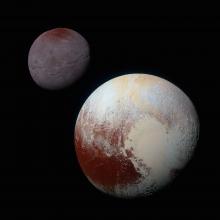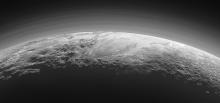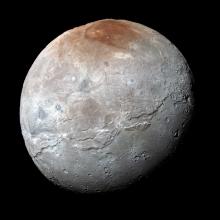Listen to today's episode of StarDate on the web the same day it airs in high-quality streaming audio without any extra ads or announcements. Choose a $8 one-month pass, or listen every day for a year for just $30.
You are here
Getting Moons
There’s more than one way for a planet to get moons. Some moons are born with their parent planets, from the disk of debris around the young Sun. Others are born after a planet gets blasted by another one. That’s the way our own moon probably was born.
And some recent studies outline a couple of other ways.
One study looked at Pluto and its moons. The largest moon, Charon, probably was born after an impact between Pluto and another large body. And some studies say that Pluto’s four smaller moons formed from the same debris.
But the new study pushes the impact down a generation. It suggests that Charon was hit by a large ball of ice and rock. That blasted a cloud of small particles into orbit around Charon and Pluto. Within a few hundred years, much of that material clumped together to make the other moons.
The giant planet Neptune, on the other hand, may have stolen some of its moons. A study simulated what might happen if Neptune plunged close to another giant planet — something that was possible in the early solar system.
Neptune could have stolen some of the other planet’s moons. Neptune’s gravity, and perhaps collisions with smaller bodies, would have sculpted the final orbit of a moon like Triton, Neptune’s biggest. Moons that are farther out would have followed elongated orbits — like Nereid, Neptune’s third-largest moon.
So there are many ways for a planet to acquire moons — some easy, and some violent.
Script by Damond Benningfield





